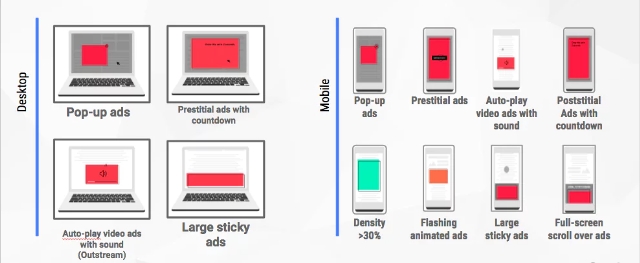Google Chrome, one of the leading web browsers available, is using its built-in ad blocker to block “annoying” or “intrusive” video ads.
The browser has been using an ad blocker to intervene when sites serve ads that are considered to be disruptive or problematic based on standards established by the Coalition for Better Ads.
Yesterday, the Coalition updated its Better Ads Standards to include new information about ads shown with online videos. As such, Google says it will be expanding its ad blocking features to block ads within videos less than 8 minutes long which are disruptive in any of the three following ways:

Image Source: The Coalition for Better Ads
- Pre-roll ads: Long, non-skippable pre-roll ads or groups of ads longer than 31 seconds that appear before a video and cannot be skipped within the first 5 seconds.

Image Source: The Coalition for Better Ads
- Mid-roll ads: Ads of any length which appear in the middle of a video.

Source: The Coalition for Better Ads
- Image or text ads: Ads that appear on top of a playing video and are in the middle ⅓ of the video player window or cover more than 20 percent of the content.
To be clear, these issues only apply to videos that are less than 8 minutes long. Longer videos can continue to include pre-roll or mid-roll ads without being affected.
For now, both Google and the Coalition for Better Ads are recommending removing any ads in videos which violate these standards within the next four months.
Starting August 5, 2020, Google’s Chrome browser will begin blocking these ads on sites. Sites which repeatedly run problematic ads of this sort can also be blocked from showing ads entirely.
Importantly, Google specifically states these standards will also apply to YouTube ads:
“It’s important to note that YouTube.com, like other websites with video content, will be reviewed for compliance with the Standards. Similar to the previous Better Ads Standards, we’ll update our product plans across our ad platforms, including YouTube, as a result of this standard, and leverage the research as a tool to help guide product development in the future.”





